Chapter: Aquaculture Principles and Practices: Oysters and Mussels
Culture systems of Oysters
Culture systems
The earliest system of oyster culture, which still prevails in many
places, is referred to as bottom culture, where oysters are grown on the sea
bottom either in intertidal or subtidal areas.
This may involve collection of spat from areas of abundant spat-fall and
planting them on suitable beds for on-growing. In areas which are suitable for
both spat collection and on-growing, the main intervention by the oyster farmer
may only be the provision of molluscan
shells to stiffen the bottom and to serve as cultch for the attachment
of spat, and possible protection from pests and predators. Though this system
is the least productive, it continues to be practised because of legal
restrictions on the use of off-bottom floating structures in the coastal areas,
or because off-bottom culture has not proved economical under local conditions.
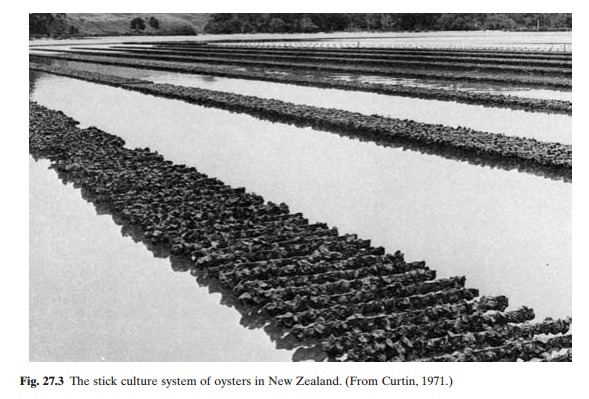
Off-bottom culture systems include stake/ stick culture (fig. 27.3),
suspended culture and rack culture. Among these, the earliest is probably the
stake or stick culture system, where bamboo, wooden or cement stakes or sticks
are driven into the bottom or set out horizontally on racks to catch spat.
Grow-out may be in the spat-catching area itself or, more often, in separate
grow-cut areas. The stake or stick system is particularly useful in intertidal
areas with soft mud bottoms.
The stone-bridge method of culture employed in China for growing oysters
(C. rivularis) in muddy areas
involves the collection ofspat on cement slabs placed in the form of a series
of inverted Vs (L) (fig. 27.4). The seed
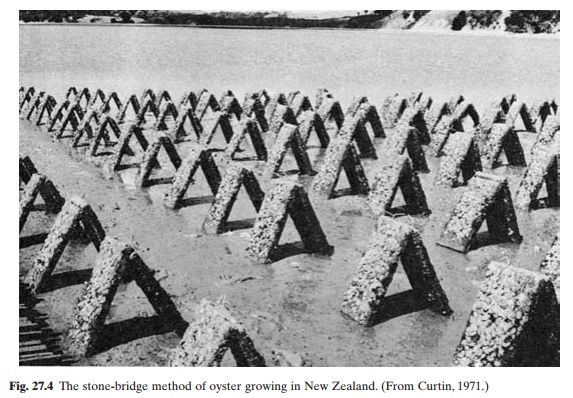
In typical rack culture systems, racks of different designs are used to
suspend trays (fig. 27.5) or strings/ropes carrying oyster cultch in or near
intertidal zones.They are generally built to about 1–2 m height. Strings of
shells or other types of cultch can be either hung or placed horizontally on
the racks for growing.
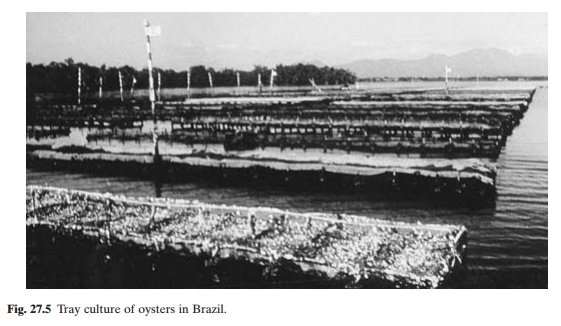
In suspended culture systems, strings/ropes or trays are suspended from
floating rafts or long lines (fig. 27.6). While rafts are used in protected
areas, long lines anchored at both ends and supported by floats can be laid out
in more exposed areas. Different designs of trays have been developed from the
earlier ones made of wood and wire screens. As well as rubber, plasticcoated
wire mesh and polypropylene, special metal alloys are also being used to reduce
biofouling.
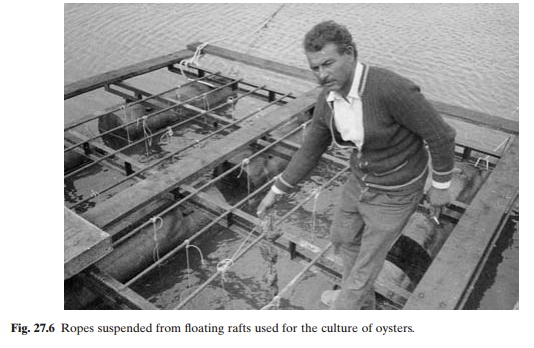
Plastic mesh bags containing shell-cultch are often used in certain
areas for spat collection. Elastic mesh bags are also sometimes used to grow
adult oysters on intertidal racks (fig. 27.7).
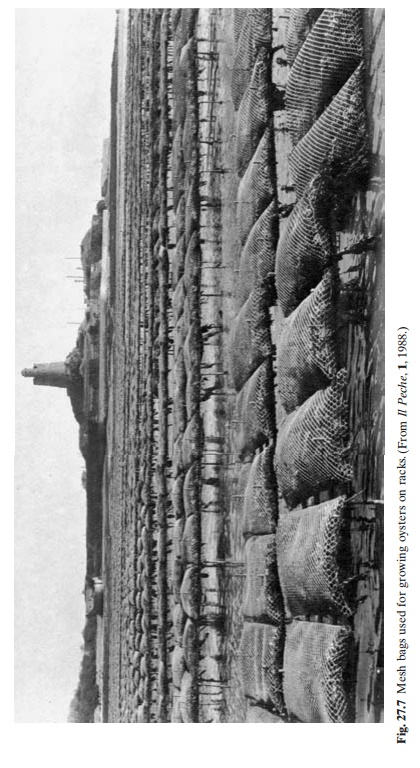
Polyethylene mesh bags, made in the shape of Chinese lanterns and
suspended from long lines, are especially suitable for growing cultch-less
oysters.
There are a number of other types of containers and substrates which are
being tried for off-bottom culture of oysters. Other systems under trial are
raceway and pond culture (Lee et al.,
1981) and recirculating systems (Pruder
et al., 1977).
Related Topics